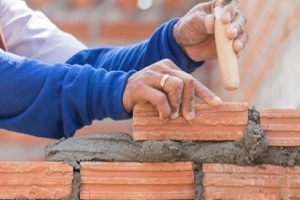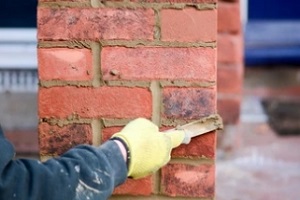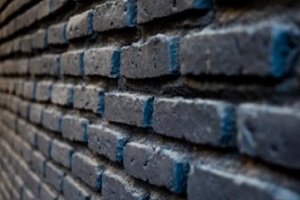 Building construction that uses masonry—whether brick, stone, clay, or concrete—will eventually require repairs. While many people select stonework for its robust nature that can last years, weather exposure and gradual shifting of the building can wear down the stonework over time.
Building construction that uses masonry—whether brick, stone, clay, or concrete—will eventually require repairs. While many people select stonework for its robust nature that can last years, weather exposure and gradual shifting of the building can wear down the stonework over time.
Of the many masonry repairs and maintenance tasks that you can perform (or call an expert for) on your building, “pointing” is the most common. Pointing is not the same process as repointing or tuckpointing, even though those terms are treated as interchangeable. Read on to learn about their differences and whether or not they’re the right choice for your building.
Understanding Pointing, Repointing And Tuckpointing
Brick pointing occurs when the brick is newly installed; the process involves filling mortar joints to finish them during construction. Unless you are building a brand new structure, it’s unlikely that you’ll need professional assistance with pointing. Repointing, which is the process of removing and replacing old mortar, is a more sophisticated technique requiring professional oversight. Tuckpointing differs from repointing in that it goes beyond the replacement of mortar.
It replaces old or compromised mortar with fresh mortar to match the color of your building’s brick. Next, lines of putty – also known as fillets – are applied down the center of the new joints. Tuckpointing creates a polished visual contrast that is pleasing to the eye. However, tuckpointing will not make your new mortar last longer than repointed mortar. The only difference is the aesthetics. Both tuckpointing and repointing accomplish the same goal, but repointing lacks the high-contrast visual appeal of tuckpointing.
Why Is Proper Brick Pointing Important?
 Brick pointing is critical for business and residential structure masonry repair and maintenance because it serves as the backbone of the building’s weight distribution. Mortar helps the bricks to distribute weight across an even plane; if some mortar is damaged or missing, bricks with uneven or damaged mortar may bear too much weight.
Brick pointing is critical for business and residential structure masonry repair and maintenance because it serves as the backbone of the building’s weight distribution. Mortar helps the bricks to distribute weight across an even plane; if some mortar is damaged or missing, bricks with uneven or damaged mortar may bear too much weight.
This leads to cracking, bulging and even collapse. Inadequate brick pointing can also invite damage-causing moisture. Much moisture damage will not be noticeable until it is beyond remedy, leading to costly replacement or repairs. New construction should undergo careful brick pointing to ensure that the work lasts for as long as possible.
Have a Professional Complete Your Brick Pointing
Is Brick Repointing Necessary If The Original Pointing Was Done Well?
Even the best brick pointing will degrade over time as weather and other elements cause the material to deteriorate. You must inspect your brick surfaces for mortar decay as a matter of practice, and act on it as soon as possible. Brick repointing will likely be necessary at some point during your ownership of a building, and proactive maintenance saves money and protects against structural failure. When caught early, these issues are inexpensive to fix. Don’t neglect regular inspection, even on new construction.
What Happens If You Neglect Brick Maintenance
 Even though brick is a strong material, at some point compromised mortar will cause it to break. While small brick cracks might not seem like a cause for concern, it is a sign of uneven weight distribution. This creates additional vulnerabilities for mold, water, algae, and even pests to hijack your structure. Preventative brick repointing is not a disruptive process; you can continue about your normal day while professionals replace the old mortar. This can enhance the curb appeal of both private residences and businesses.
Even though brick is a strong material, at some point compromised mortar will cause it to break. While small brick cracks might not seem like a cause for concern, it is a sign of uneven weight distribution. This creates additional vulnerabilities for mold, water, algae, and even pests to hijack your structure. Preventative brick repointing is not a disruptive process; you can continue about your normal day while professionals replace the old mortar. This can enhance the curb appeal of both private residences and businesses.
Trust The Experts To Help You Tackle All Your Masonry Repair Needs
Whether you have already noticed that your brick and mortar are beginning to degrade or you need someone to evaluate your building for repointing, be sure to trust the experts. The professionals at Waterproof Caulking & Restoration would be happy to help you understand your options and develop a repair plan. Reach out to learn more about our repointing services or to schedule an appointment today.
